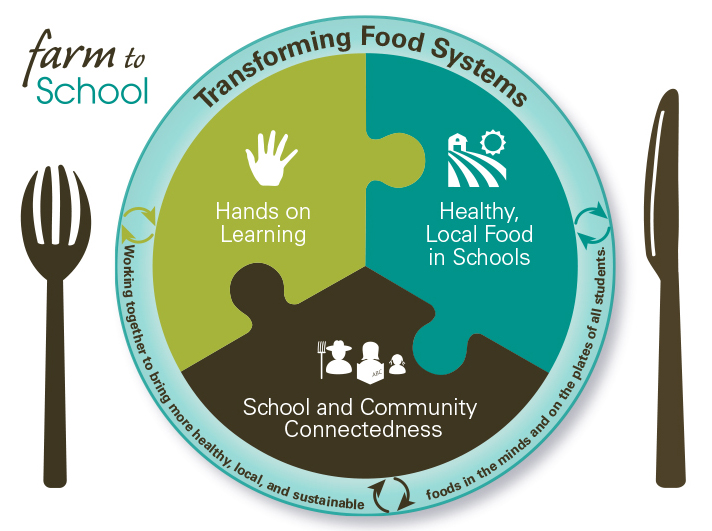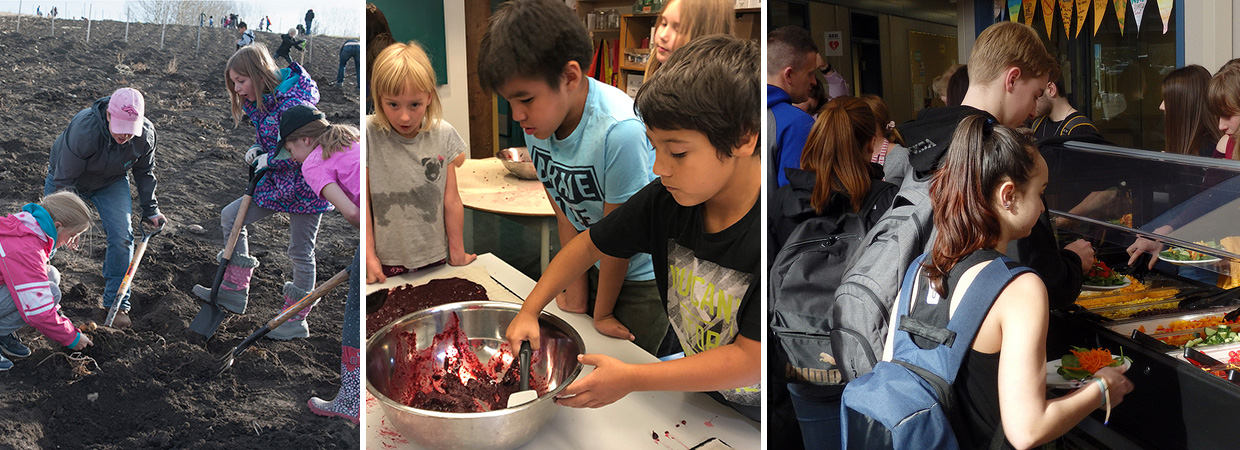
Healthy, Local Food:
Schools procure local food in many ways, including directly from farms or schoolyard farms, through food distributors, or by harvesting wild or traditional foods. When local food arrives in schools it may be served in a salad bar, hot lunch program, tasting activity, fundraiser, or community celebration.
Hands-On Learning:
Food literacy is a critically important component of Farm to School. Students learn about food, food systems, and food skills in the school garden, greenhouse, kitchen and classroom. They connect with nature and the environment. They may take field trips to local farms, forests, and shores.
School and Community Connectedness:
Farm to School is built upon strong relationships. Schools establish relationships with farmers, community members, and supportive organizations, tapping into local knowledge, passion, skills, and resources. Students connect deeply with their school and the wider community.
The following 2 visuals have been developed to celebrate and amplify the diversity of ways that farm to school takes shape in different communities, and to show how farm to school involves the whole local food system.
Thank you to Carina Nilsson, Illustrator and graphic recorder, for putting our vision into graphics!

(Includes Sea to School, Forest to School)